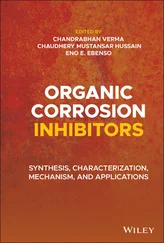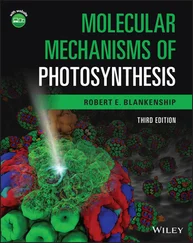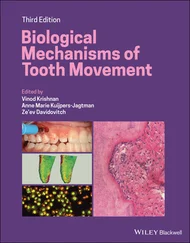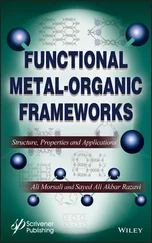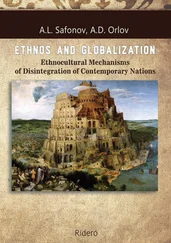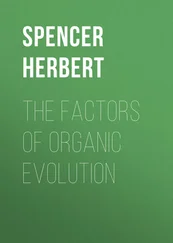Since 1998, I have been on faculty at two higher educational institutions, West Virginia University Institute of Technology (1998–2001) and University of Charleston (2001–present). My current and previous research interests have much emphasis on reaction mechanisms. When I teach upper‐level organic chemistry and biochemistry courses, the lectures are also strongly mechanisms based. In the past dozen years or so, my teaching and research have been reinforcing each other. Now I wish to share my experiences with other colleagues, students, and different scientific workers in the chemical community by publishing this book.
The book consists of 10 chapters. It starts with reviews of various fundamental physicochemical principles ( Chapter 1) which are essential for studying organic mechanisms. Then each of the following chapters is devoted to one major class of organic reactions. Thorough discussions on various reaction mechanisms are presented in the book in a very good detail, and a sophisticated and readily understandable manner. Special attention has been paid to mechanisms of different organic functionalization processes, such as methodology of aliphatic C—H bond activation and functionalization, charge‐transfer aromatic nitration and recently developed chemistry of aromatic compounds, and cycloaddition of alkenes to 1,3‐dipolar‐like molecules. Substantial efforts have been made in demonstrating direct applications of organic mechanisms in elucidating sophisticated biological and biochemical processes and designing organic synthesis. This can be seen throughout all the chapters and reflects a remarkable feature of the book. To facilitate teaching and learning, a Solutions Manual and PowerPoint slides of all the figures will be provided by the author and will be available for professors on a companion website for adopting instructors. I greatly appreciate all the constructive comments given by seven peer‐reviewers on the initial manuscript. The reviewers’ comments have helped the author tremendously in improving the book.
I would like to take this opportunity to dedicate my book to Dr. Jack Passmore, my former PhD supervisor, and to my organic chemistry and biochemistry students at University of Charleston. The book is also dedicated to my wife Cindy and my son Oliver.
Xiaoping Sun, PhD
Professor of Chemistry Professor of Chemistry Charleston, West Virginia
ABOUT THE COMPANION WEBSITE
This book is accompanied by a companion website: www.wiley.com\go\Sun\OrgMech_2e

The website includes:
Solution Manual
PPT
1 FUNDAMENTAL PRINCIPLES
1.1 REACTION MECHANISMS AND THEIR IMPORTANCE
The microscopic steps in a chemical reaction which reflect how the reactant molecules interact (collide) with each other to lead to the formation of the product molecules are defined as mechanismof the reaction. The mechanism of a reaction reveals detailed process of bond breaking in reactants and bond formation in products. It is a microscopic view of a chemical reaction at molecular, atomic, and/or even electronic level.
The structure of most organic compounds is well established by X‐ray crystallography and various spectroscopic methods with the accuracy of measurement in bond distances and angles being the nearest to 0.01 Å and 1°, respectively. Only effective molecular collisions, the collisions of the molecules with sufficient energy that take place in appropriate orientations, lead to chemical reactions. The extent of a chemical reaction (chemical equilibrium) is determined by the changes in thermodynamic state functions including enthalpy (Δ H ), entropy (Δ S ), and free energy (Δ G ). The combination of kinetic and thermodynamic studies, quantum mechanical calculations, and geometry and electronic structure‐based molecular modeling has been employed to reveal mechanisms of various organic chemical reactions.
Reaction mechanisms play very important roles in the study of organic chemistry. The importance of mechanisms not only lies in that they facilitate an understanding of various chemical phenomena but also that mechanisms can provide guidelines for exploring new chemistry and developing new synthetic methods for various useful substances, drugs, and materials. In this regard, mechanistic studies will allow synthetic chemists to vary reaction conditions, temperatures, and proportions of chemical reagents to maximize yields of targeted pure products. For industrial chemists , mechanistic knowledge allows the prediction of new reagents and reaction conditions which may affect desired transformations. It also allows optimization of yields, reducing the costs on raw materials and waste disposals. It provides a tool for the chemists to make reactions occur in their desired ways and manufacture the ideal products. For biochemists and medicinal chemists , the microscopic view of organic reactions can help them better understand how the metabolic processes in living organisms work at molecular level, how diseases affect metabolism, and how to develop appropriate drug molecules to assist or prevent particular biochemical reactions [1].
Overall, the goal of this book is to tie reaction mechanisms, synthetic and green chemistry methodology, and biochemical applications together to form an integrated picture of organic chemistry. While the book emphasizes mechanistic aspects of organic reactions, it is a practical textbook presenting the synthetic perspective about organic reaction mechanisms appealing to senior undergraduate‐level and graduate‐level students. The book provides a useful guide for how to analyze, understand, approach, and solve the problems of organic reactions with the help of mechanistic studies.
In this chapter, fundamental principles that are required for studies and understanding of organic reaction mechanisms are briefly reviewed. These principles include basic theories on chemical kinetics, transition states, thermodynamics, and atomic and molecular orbitals.
1.2 ELEMENTARY (CONCERTED) AND STEPWISE REACTIONS
Some chemical reactions only involve one microscopic step . In these reactions, the effective molecular collision, the collision of reactant molecules with sufficient energy in appropriate orientation, leads to simultaneous breaking of old bonds in reactants and formation of new bonds in products. This type of reactions is defined as elementary (or concerted) reactions. An elementary (concerted) reaction proceeds via a single transition state. The transition state is a short‐lived (transient) activated complex in which the old bonds are being partially broken and new bonds are being partially formed concurrently. It possesses the maximum energy level (in the free energy term) in the reaction profile (energy profile).
Many other chemical reactions involve many microscopic elementary (concerted) steps in the course of the overall reactions. These reactions are defined as stepwise (or multistep) reactions. A stepwise reaction proceeds via more than one transition state. Each microscopic concerted step proceeds through one transition state, giving a distinct product which is referred to as an intermediate. Each intermediate formed in the course of a stepwise reaction is metastable and usually highly reactive, possessing a relatively high energy level. Once formed, the intermediate undergoes a subsequent reaction eventually leading to the formation of the final product.
Читать дальше



